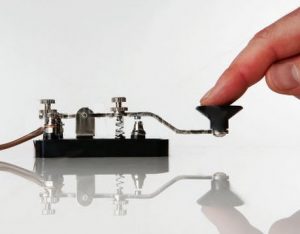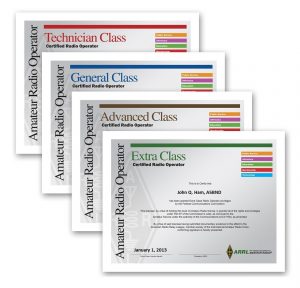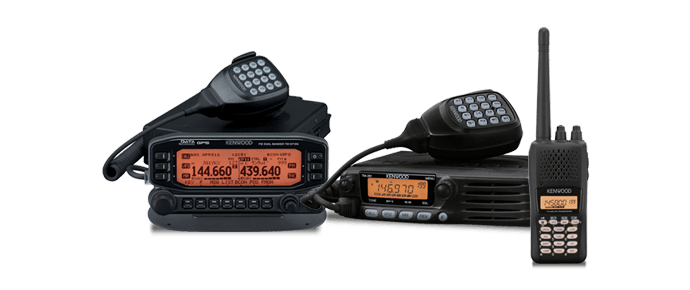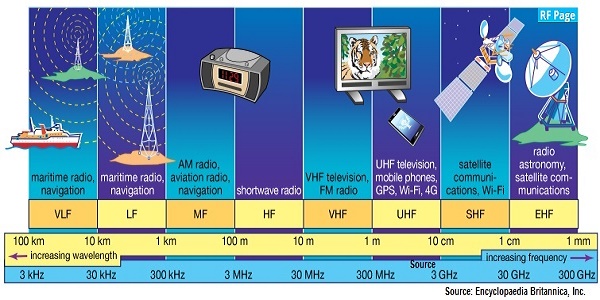Short Wave Radio, aka Ham Radio
Short Wave will be the communication mode of survivors, but this is not a high technology issue. CB and Ham radios are in many hands, highly popular and much used, world wide. Radios can be cranked up for power, devices that can be purchased today, and used by the military in the field. No power requirements. PC use in short wave packet relay is more complicated, but home computers are prevalent, and hackers can adjust to the requirements if they have access to written instructions ahead of time, and many will! The community does not need all computer functioning, just one. It does not need major electrical support, just fast peddling on the bike gen rack for the hour. It does not need booster towers on every hill, as good hearted communities will find they are being boosted beyond their hopes, by helping hands behind the scenes.
All rights reserved: ZetaTalk@ZetaTalk.com
Transcript August 3, 2020 onYouTube- https://youtu.be/phZnJ2tTzNc Before all your batteries run dry, try to establish contact via short wave radio. Hopefully you have a crank short wave radio, used by the military for field communication. If you don’t have some Ham Radio operators in your group, hopefully you got a book. This will help you understand the size of the catastrophe, in order to gauge if help will be coming or if you are on your own.
Per the Zetas, using such a route when all else seems lost can work via Short Wave, which can go tower to tower and even use Moon Bounce for longer distances. Ham radio, using short wave, is the emergency frequency. It is the fall back. Maybe you won’t get to watch streaming movies, but sending Internet packets to communication via chats or email? Certainly possible!
Comment
-
Comment by Juan F Martinez on April 30, 2023 at 11:30pm
-
BAOFENGS ARE CHEAP AND LET YOU TRANSMIT ON FREQUENCIES YOU AREN'T LICENSED FOR.
Ham Radio from Zero to Hero!
Don’t count on that iPhone to always work after Shit Hits The Fan
-
Comment by Juan F Martinez on August 1, 2021 at 5:08am
-
Amateur radio station
An example of an amateur radio station with four transceivers, amplifiers, and a computer for logging and for digital modes. On the wall are examples of various amateur radio awards, certificates, and reception report cards (QSL cards) from foreign amateur stations.
https://en.wikipedia.org/wiki/Amateur_radio
An example of an amateur radio station with four transceivers, amplifiers, and a computer for logging and for digital modes. On the wall are examples of various amateur radio awards, certificates, and reception report cards (QSL cards) from foreign amateur stations.
-
Comment by Juan F Martinez on July 6, 2021 at 3:45am
-
The Best SHTF Radios for 2021
July 2, 2021 by Robert CombsA portable SHTF radio is beneficial in case of serious emergencies that require the survival mode of an individual. It might be a land that is unexpectedly attacked or collapsed, which is nothing new with military troops. Or, perhaps, a group of friends experiencing dangerous tactical games in the jungle.
Whatever these situations might be, their mutual common would be a chaotic scenario. Preparing yourself for the worst crisis of society with the best SHTF radio means you can save your life. You need to rely on your strength and become the best survivalist with an effective SHTF radio via this article.
- Best SHTF Radio Reviews
- What to Look for When Buying a SHTF Radio
- Frequently Asked Questions
- Conclusion
-
Comment by Juan F Martinez on July 5, 2021 at 11:34pm
-
The Best Hand Crank Radios for 2021
July 1, 2021 by Robert CombsIf you don’t own an emergency best crank radio, then today is a good day to do so. Why? It is our obligation to be prepared for natural catastrophes and emergencies.
Hand crank radio flashlight is a self-contained survival gear that comes highly featured to help you out during a time of crisis.
best hand crank radio
In America, weather emergencies happen all the time, and that is a fact. The hand crank radio is one of the most powerful, reliable, and durable emergency gears you can find. After all, they are used by first responders during an emergency.Emergencies, like storms, tornadoes, floods, do not knock and enter. They challenge your preparation beforehand. So, this inclusion in your emergency kit will keep you safe and secure.
To help you with your emergency readiness plan, I have compiled a list of some of the best hand crank radios for 2021.
Let us delve into the hand crank radio reviews.
Contents [hide]
Best Hand Crank Radio Reviews
1. FosPower Solar Hand Crank Radio
2. Esky 3 LED Flashlight Emergency Radio
3. Puiu Soul Emergency-Hand-Crank-Radio
4. Rege Modal Emergency Solar Hand Crank Radio
5. Kaito KA500 Solar Powered Radio
6. Raynic Solar Hand Crank Emergency Radio
7. Eton Emergency NOAA Hand Crank Radio
8. RunningSnail Solar Crank NOAA Weather Radio
9. Dodocool NOAA Weather Radio
10. Rocam Emergency Hand Crank
11. Givoust Emergency Weather Crank Radio
12. Midland ER310 premium device
What to Look for When Buying a Hand Crank Radio
Other Important Factors to Consider
Frequently Asked Questions
Conclusion
Best Hand Crank Radio Reviews
-
Comment by Juan F Martinez on July 5, 2021 at 6:08am
-
Other Uses for Ham Radio Gear
Those who have absolutely no interest in practicing or using their equipment outside of the most severe emergency can still find quite a bit to do with it. In fact, some pieces of gear have special features that make them more useful than other types of radios in these situations.
For instance, you can listen to standard AM and FM broadcasts with certain ham receivers. Unlike standard stereo equipment, ham radio gear is extremely sensitive and therefore able to pick up transmissions from further away than you might be used to.
You could use this feature to listen to National Weather Service bulletins if all your local broadcasters lost power.
Most receivers that work with the popular 2-meter band can receive special alerts from the National Oceanic and Atmospheric Administration (NOAA) as well. Small handheld radios in this category can even listen in on police and fire department activity, which is unbelievably useful in an emergency when government authorities are blocking out the press.
Speaking of the press, some rigs can also let you in on news broadcasts you’d never get from the mainstream media. World band stations, also called shortwave broadcasters, use frequencies in the HF bands so they can get messages out to people all over the world.
Schedules are available online that can tell you who is broadcasting and when. You might want to keep an updated copy of these somewhere just in case something happens.
You can also find radios that allow you to listen in on aircraft transmissions and other signals, which are all useful in an emergency.
In fact, some hardcore survivalists have elected to found special corps designed to facilitate communication when something bad happens.
Radio Positions for Survivalists
Preppers have made two different corps, and both of them are opened to anyone with a license. If you want to make sure that you’d have buddies in an emergency, then either of them is worth looking into.
Amateur Radio Emergency Service (ARES) is run by the American Radio Relay League (ARRL). Local emergency coordinators are located across the country, and they put together lists of names of people who have at least some background in survival.
In a serious situation, these people get called up. In the gravest events, nobody less than the president can activate an old law that sends Radio Amateur Civil Emergency Service (RACES) into effect.
If you’re a RACES operator, then you’ll be one of the only people allowed to communicate for the duration of the emergency. Those who are serious about being prepared for doomsday and stick together with like-minded individuals who also have the same kind of gear as they do.
That of course prompts the question as to what kind of equipment you need. Surprisingly, you won’t have to break the bank to put together your station.
-
Comment by Juan F Martinez on July 5, 2021 at 6:06am
-
Do You Still Need to Learn Morse Code?
 Learning Morse sounds like a ton of work to anyone who isn’t interested in being a radio hobbyist. The FCC phased out the requirement over a series of years and dropped it completely in 2007.
Learning Morse sounds like a ton of work to anyone who isn’t interested in being a radio hobbyist. The FCC phased out the requirement over a series of years and dropped it completely in 2007.There’s no reason to subject yourself to it any longer if you don’t want to.
Before you completely tune out the idea, at least give some thought to at least practicing code at some point in the future. Morse is an extremely efficient way of communicating that can carry over long distances even if you don’t have much power or even a good antenna.
This makes it perfect for serious survival situations.
In fact, you can transmit code with nothing more than a signal mirror worn around your neck. This has made it popular with wilderness guides and urban explorers.
If you were ever incapacitated in an emergency, then you could even communicate using Morse code by squeezing another person’s hand!
Once again, the best way to practice is by actually having conversations on the air. However, there are many online resources you can now use to practice code if you wanted.
-
Comment by Juan F Martinez on July 5, 2021 at 6:05am
-
Earning a Ham Radio License
 You’ve probably heard that ham radio operators have to take examinations to get licensed to use their equipment.
You’ve probably heard that ham radio operators have to take examinations to get licensed to use their equipment.While this is technically true, you probably won’t have to do much to get one.
There used to be many different licenses classes, but new hams today are assigned to one of the following three classes:
- Technician
- General
- Amateur Extra
Those who want to be General or Extra class hams have to take additional tests, which might sound like a hindrance but the more qualified you are the better you will be able to work the airwaves. However, survivalists who aren’t interested in all the hobbyist stuff can feel free to ignore them!
Technician licenses give you privileges on a majority of the spectrum assigned to the ham service, including the ones used to communicate after disasters.
All you have to do to get one is pass a simple 35 question test. Due to certain regulations, the question pool has to be published so you can study it. There are even a few places on the web that let you practice before you sit down to take it.
This makes the whole issue of a test a formality at best. It’s easier than getting a driver’s license.
Say you don’t want to go through all that trouble, though. There are still ways to stock up on equipment without ever having to sit at a volunteer examiner’s table.
-
Comment by Juan F Martinez on July 5, 2021 at 6:04am
-
What’s the Best Kind of Ham Radio Equipment for Preppers?
Experienced hams will tell you that the real action is all on HF and that you should have what they refer to as an 80 meter or 10-meter radio. While this might be true from a hobbyist’s perspective, VHF and UHF equipment are much more effective in an emergency.
Unless you want to chat with people all over the world, most of your needs can be satisfied by a handitalkie (HT). These handheld ham radios look like traditional FRS and GMRS two-way radios and work just like a walkie-talkie.
The big difference is that ham radio vendors have packed dozens of features into their latest gear. Some hams refer to these as a ‘shack on a belt’ because they include all of the features of a more sophisticated ham radio base station into a size that’s easy to carry.
You could also opt for the best of both worlds with ham radio for your car, more powerful than a handheld but with even greater mobility.
 Multi-band radios are always best if you can get them. These let you talk on more than one group of frequencies.
Multi-band radios are always best if you can get them. These let you talk on more than one group of frequencies.If you can only pick one single band, then go with two meters and make sure that your radio works with the so-called FM mode. Don’t confuse this for the FM band on a car stereo.
While they use the same technology, in theory, these radios transmit on much higher frequencies. They’ve become widely popular with hams, which means there’s a ton of existing infrastructure out there to support them.
The second most popular band is 70 cm, which is sometimes called 440 because the 440 MHz frequency exists inside of it. You can often find dual-band handhelds as well as mobile radios that offer both two meters and 70 cm.
Most survivalists would consider this setup to be pretty flexible for most uses. You’ll also have a fairly wide range of antenna choices at these frequencies as well.
As long as your radio has a standard jack, you should be able to find two-band antennas that can work fairly well at these frequencies. Depending on local circumstances, you might need a repeater to talk further, however. https://alphasurvivalist.net/the-ultimate-survivalists-guide-to-ham...
-
Comment by Juan F Martinez on July 5, 2021 at 6:00am
-
The Ultimate Survivalists Guide to Ham Radio
Do you have a plan in place to stay in touch in a real emergency?
A genuine SHTF-style situation is going to do much more than knock out cell towers! Imagine that almost every way of communicating that you take for granted goes out.
What are you going to rely on?
Amateur radio services give you the freedom to communicate over long distances no matter what happens. You’ve probably heard this referred to as ham radio, but you might not know a whole lot about it.
The good news is that it’s easier than ever to get involved with ham radio as there are clubs and societies in almost every region. If you want to prepare for the worst, then all it takes is an absolute bare minimum of equipment and a little knowledge about how radio works to get started.
More than likely, you’re groaning to yourself right about now with regards to a potentially steep learning curve, but literally, the material in the next section is all you’ll ever have to know, although more knowledge is certainly better.
There’s absolutely no reason at all why preppers need to fear radio theory. It’s quite simple, and once you’ve got it down it’ll become obvious why ham radio is by far the best emergency radio communication method for staying in touch during the worst situations.
What do People Mean when they Talk about Bands and Frequencies?
Radio is one small part of the larger electromagnetic spectrum. Cellular phones, television signals, and Wi-Fi Internet devices all use different parts of this spectrum to put out messages.
On one end is the electricity that runs through your walls and on the other is sunlight. Ham radio frequencies are somewhere between these two extremes.
If you’ve ever taken a look at a piece of ham radio gear, then you might see a cryptic number like 146.520 MHz on the display screen. This is called a frequency.
It measures how fast the radio’s signals are vibrating in terms of measurement called megahertz. When two ham radio stations want to talk to each other, they usually have to be on the same frequency.
 To make it easier for people to find one another, engineers grouped frequencies in bigger areas called bands. Ham radio operators often refer to bands based on a measurement called wavelengths.
To make it easier for people to find one another, engineers grouped frequencies in bigger areas called bands. Ham radio operators often refer to bands based on a measurement called wavelengths.Radio waves are invisible without a special scope, but if you could see them you’d notice big peaks and valleys. The distance between them is called a wavelength.
Unfortunately, these same engineers have decided to use metrics for wavelengths! As a result, you’ll usually hear hams talk about two meters or 70 centimeters as the names of various bands.
They’ve also grouped bands into different areas of the electromagnetic spectrum. You’ll come across high frequencies (HF), very high frequencies (VHF), ultra-high frequencies (UHF), and even super-high frequencies (SHF).
When you’re dealing with higher frequencies, you’re going to be working with shorter antennas and lighter gear. That’s why VHF and UHF radios are generally the best choices for survivalists.
Take a deep breath! That’s all the theory you’ll ever have to learn.
Passing the license exam isn’t that much harder, either. In fact, the truth is you might not even have to do it, although we would certainly advise you to.
https://alphasurvivalist.net/the-ultimate-survivalists-guide-to-ham...
SEARCH PS Ning or Zetatalk
Nancy Lieder, Emissary of the Zetas.
https://poleshift.ning.com/xn/detail/3863141:Comment:1168188
Awakening to the Alien Presence ZetaTalk
The truth will likely never to be known to the public but be washed away in the Nibiru panic soon to engulf the world.
The Worst of the Cover-Up
https://poleshift.ning.com/profiles/blogs/the-worst-of-the-cover-up
Main Establishment Lies
https://poleshift.ning.com/profiles/blogs/main-establishment-lies
Donate
© 2025 Created by 0nin2migqvl32.
Powered by
![]()
You need to be a member of Earth Changes and the Pole Shift to add comments!
Join Earth Changes and the Pole Shift